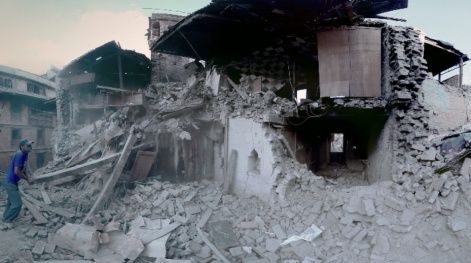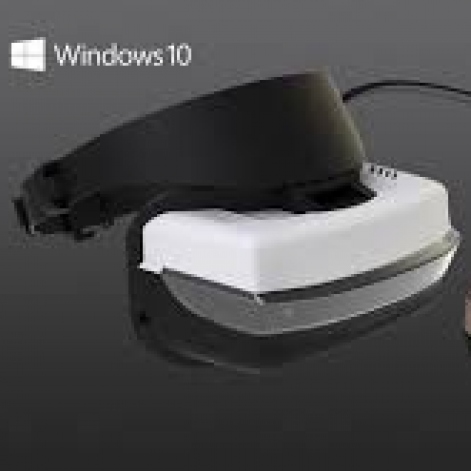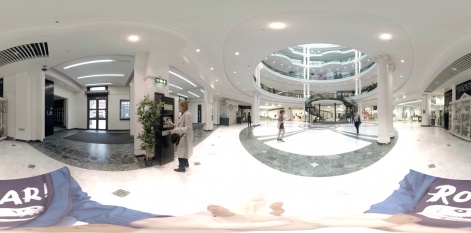Mark Curtis, Chief Client Officer at Fjord, Design and Innovation from Accenture Interactive explores VR’s potential to drive change, from generating empathetic responses in an audience and charitable donations to how it could be used directly by the people who need help themselves.
We often hear of the opportunities Virtual Reality affords us through the realms of entertainment and gaming. But what if the technology could be harnessed for something larger, as a force for good to challenge and educate us about a world that exists beyond our own? By placing ourselves at the heart of the situation, our barriers break down and the potential for empathy and emotional responses increases, helping to deliver an all-powerful call-to-action. So how can brands and charities capitalise on the opportunities of VR?
Getting To The Heart Of The Story
VR technology immerses its audiences, as seen in a recent VR experience to put people at the heart of the refugee crisis. With VR, we can be placed at the heart of the experience; we can feel the pain someone endures to reach a clean water source in central Africa to encountering the horrors of war inflicted upon thousands of civilians on a near daily basis. Through these experiences, our emotional responses are shaped to respond to unimaginable environmental surroundings and can motivate us to take action.
Charities have long struggled to strum the empathy of potential supporters, but VR technology can help people truly understand someone else’s plight. For example, a recent VR experience explored the aftermath of an earthquake in Nepal so viewers could see the damage caused through a unique personal perspective. We don’t have to simply imagine what it would be like to be there; through the power of VR, we can experience it in a sensorial dimension.

Opening Up To The World Of VR
A number of barriers exist to opening up VR as a key communication channel, the primary setback being cost. The most primitive of VR headsets require a smartphone to function and these can be financially draining.
However, the tide is starting to shift and Microsoft will soon be launching affordable VR headsets through its partners. This means that VR technology will become more accessible to consumers across the board, amplifying audience participation in these experiences. At the other end of the spectrum, a charity isn’t restricted to using VR to drum up support and donations – it can also use this technology as part of its activity in helping others.

Education in developing economies is an area experimenting heavily with affordable VR and technology-based solutions, spearheading its future development and potential. If charities and businesses can offset the costs of VR headsets with alternative financing, pupils across the under-developed world can be afforded the same learning opportunities as those in wealthier regions.
Another key concern with the use of VR by charities is the issue of physical space. If a charity wishes to spread its message, they need to have access to the space around them to do so and adapt the experience to those surroundings.
These questions remain open-ended, but companies can innovate to offer solutions. Whether this is through creating a portable studio that can tour the country, like the National Autistic Society’s recent VR experience, or by releasing an application that users can download at home, there are multiple answers and options, which can then level the playing field within the VR industry for both the tech giants and disruptive start-ups.

VR As A Disruptive Force For Good
VR technology, like everything else in the tech world, is undergoing continual change and innovation, as more people begin to use virtual reality and seek to make significant improvements.
For example, user inputs and controllers only really came to the forefront this year, and there’s no limitations on where VR can go. Sensorial exploration in VR is still in its infancy, but with sight and sound already well established, it’s easy to imagine that taste, smell and touch are soon set to blur the lines between science fiction and fact.
VR opens up a world of change making opportunities for disruptive start-ups to flex their talent and adapt the way in which we can experience and utilise VR beyond gaming and entertainment. The third sector is continually looking for fresh and innovative ways to reach and engage with new audiences. VR creators are in the optimum position to help these charities offer powerful, emotionally grabbing experiences that can help change the world for good.
About The Author
Mark Curtis is a serial entrepreneur and innovator who has worked in media, digital, mobile and design for 30 years, Mark co-founded service design consultancy Fjord in 2001. At Fjord, Mark is Chief Client Officer and his role spans offer definition, marketing and business development. Mark is a frequent speaker at conferences and commentator in the media. He has published a book, Distraction – Being Human in the Digital Age about the social effects of new technology.













